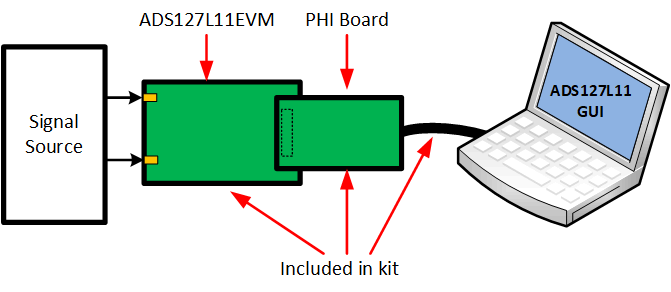SBAU351 April 2021
1.1 ADS127L11EVM Kit
The ADS127L11 evaluation module kit includes the following features:
- Hardware and software required for diagnostic testing as well as accurate performance evaluation of the ADS127L11 ADC
- USB powered—no external power supply is required
- The PHI controller that provides a convenient communication interface to the ADS127L11 ADC over USB 2.0 (or higher) for power delivery as well as digital input and output
- Windows® 8, and Windows® 10 operating systems
- Easy-to-use evaluation software for 64-bit Microsoft® Windows®
- The software suite includes graphical tools for data capture, histogram analysis, and spectral analysis. This suite also has a provision for exporting data to a text file for post-processing.
 Figure 1-1 System Connection for Evaluation
Figure 1-1 System Connection for Evaluation